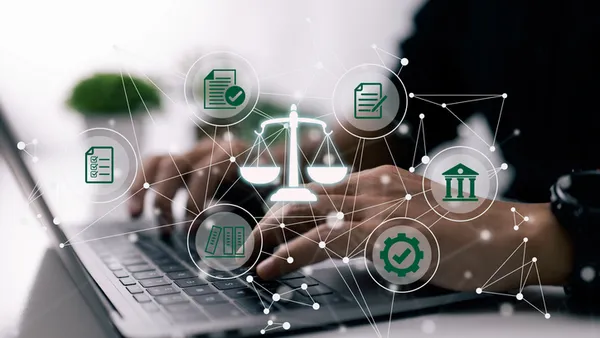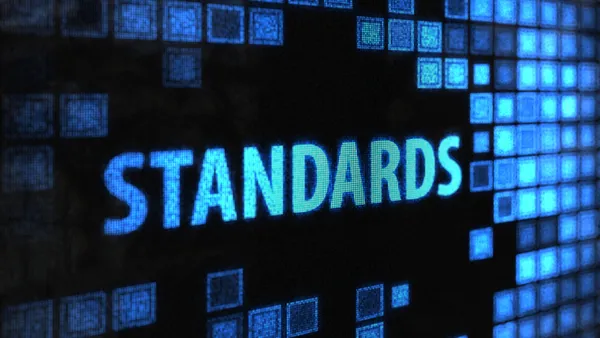Lena Kempe is principal attorney at LK Law Firm. She has served as general counsel for Buoy Health and ModusLink Corp. Views are the author’s own.
The Securities and Exchange Commission and Federal Trade Commission have expressed a strong stand against AI washing. Is your company prepared to avoid becoming an example and facing substantial penalties? Here are some steps to follow to ensure compliance with the agencies’ rules.
AI washing
"AI washing" is a deceptive marketing practice misrepresenting the extent to which artificial intelligence capabilities are used in products or services. Some common examples:
A company loosely uses the term "AI" to describe basic automation or rule-based systems lacking authentic learning and adaptive capabilities, or it exaggerates the AI predictive capacities when the product primarily relies on simple statistical analyses or predetermined rules.
SEC stance
Late last year, SEC Chair Gary Gensler cautioned public companies against AI washing. Public statements made by reporting companies about their AI capabilities fall squarely within the purview of securities regulations, which must be "full, fair, and truthful," Gensler said.
To reinforce his point, he compared AI washing to greenwashing, in which companies make unfounded representations about environmental sustainability.

The SEC has significantly ramped up enforcement actions against greenwashing. Last September, It imposed a $19 million fine on Deutsche Bank's investment arm, DWS, for "materially misleading statements" relating to greenwashing in ESG funds.
In light of Gensler's remark and the SEC's enforcement efforts in greenwashing, it would not be a surprise that public statements of publicly traded companies promoting their AI products or services will be subject to stricter scrutiny.
FTC stance
Section 5 of the Federal Trade Commission Act, which prohibits unfair and deceptive trade practices, gives the FTC the authority to take enforcement action against AI washing. FTC attorney Michael Atleson shared the agency’s view on the practice in a blog post. His main points:
Be truthful when labeling your product as AI-powered. The FTC will investigate baseless claims and conduct a thorough analysis to verify the product's use of AI. Using an AI tool in development does not by itself qualify a product as AI-powered.
Make truthful claims about your AI product and avoid exaggeration or assertions beyond current AI capabilities. Performance claims should have scientific support and be universally applicable, avoiding deception based on specific user types or conditions.
Exercise caution when claiming the superiority of your AI product over non-AI alternatives. The FTC requires substantial proof for comparative claims often used to justify higher prices or influence decisions. Only make such claims if obtaining adequate proof is possible.
Before launching your AI product, being aware of potential risks and their impact is crucial. In case of failure or biased results, attributing blame to third-party developers or claiming a lack of understanding or testing is unacceptable.
Legal strategies
To comply with SEC and FTC rules, it would be prudent for in-house legal counsel to consider taking the following steps:
Step 1. Work closely with your tech team to analyze the AI technology used in your product or service. Ask the team the following questions:
- Does the technology itself have AI capabilities? If the answer is no, and the team claims AI simply because they used AI tools to develop the product or technology, then the product is not AI-powered. If the answer is yes, ask these next two questions:
- Does the product primarily rely on simple statistical analyses or predetermined rules without incorporating more advanced machine learning techniques? If the answer is yes, then the product is not AI-powered.
- Is the technology a basic automation or rule-based system that lacks authentic learning and adaptive capabilities? If the answer is yes, then the product is not AI-powered.
If the answer is no to these last two questions, then ask these additional questions:
- How does the AI system learn? Is it supervised learning, unsupervised learning or reinforcement learning? What type of data does it learn from? What types of adaptations can the AI system make? Can it adjust its behavior based on new data or feedback? Can it improve its performance over time? Does scientific proof back up your performance claim?
- How does the AI system handle unexpected or out-of-distribution data? Can it adapt to new situations, or does it require retraining?
- What are the potential risks if AI does not function as predicted? What safeguards are in place to prevent the AI system from making biased or discriminatory decisions?
Based on the answers to these questions, you can determine if your product is genuinely AI-powered as well as its capabilities, limitations and potential risks.
Step 2. Work with the marketing department to review and approve marketing materials based on the first step's results and ensure all claims are supported by scientific proof.
Step 3. Advise the executive team regarding the potential business and legal risks of AI technology used in the products or services. Consider distributing the costs and risks through an AI licensing agreement with clients.
Step 4. Review and, if necessary, renegotiate the liability and indemnification provisions in the contracts with the vendors whose services impact your AI technology.










